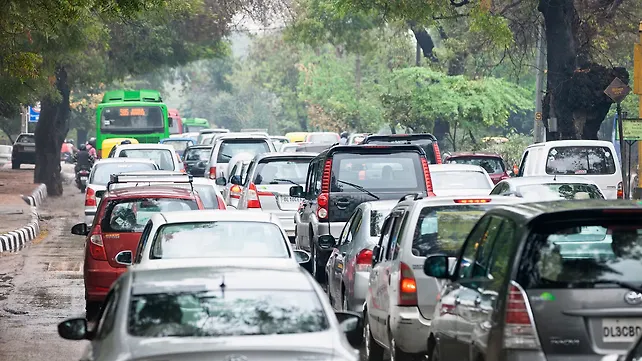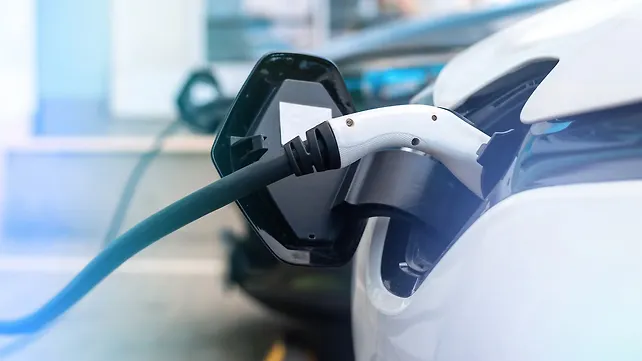
India has been promoting the use of electric vehicles (EV) since 2015, backed by Centre and State government policies. The adoption of EVs saw 6.75 million vehicles on the road in 2021 [1]. But the missing link has been the dearth of charging infrastructure.
By 2030, the Government expects EV sales penetration to reach 30% for private cars, 70% for commercial vehicles, and 80% for two- and three-wheelers [2].
Such an infrastructure is the most critical enabler for mass adoption of EVs and is the driving factor of a transformative change. The Ministry of Power (MoP) recently issued revised guidelines and standards for EVs. While the Centre is making efforts to involve both private and public agencies (BEE, EESL, PGCIL, NTPC, etc.), it also plans to expand this coverage in phases by enabling oil marketing companies to set up charging stations across cities and national highways.
The Ministry of Heavy Industry has also sanctioned 1,576 public charging stations across highways and expressways located within 25 km of range [3].
Another initiative by NITI Aayog promotes the BaaS (battery as a service) business model, which supports batteries using ACC (Advanced Chemistry Cells) supported under the Government's FAME-II scheme [4]. Under the draft policy, each battery will have a UIN (Unique Identification Number) that will enable centralised tracking and efficient swapping at stations.
Lack of standardising in plug and charge
Despite these initiatives and policies, there are some major challenges.
The connectors and protocols used in EVs are not standardised. Countries use their own style of fast charging standards like CHAdeMO in Japan, CCS in Europe, the US and Korea, and GB/T in China, whereas Tesla uses its own unique Supercharger. This lack of standardisation is a major hindrance to the proliferation of fast-charging stations.
In order to remain competitive, automotive manufacturers invest heavily in creating unique charging solutions. This has led to the proliferation of multiple charging standards based on parameters like voltage, design, battery extension, and safety.

Some suggest that a country-wide standardisation or uniformity will encourage third-party players to participate and install more public fast chargers. The ultimate goal is to enable EV customers to charge their vehicles with their preferred connector without any restrictions to brand specifications.
Standardising battery swapping technology
NITI Aayog has also released a draft on the battery swapping policy to provide efficiency in the ecosystem for electric scooters and e-rickshaws [5]. But there are a few barriers that need to be addressed:
- The design of battery swapping packs is, in most cases, dictated by the dimensions of the automobile. This makes it difficult to create any standardised battery swapping architecture.
- The EV's total electric load is based on the BTMS (Battery Thermal Management Systems) and different chemistries used in the battery. The cell manufacturers design this component, and it is unique to each make and model. Therefore, the same battery switching pack cannot be used for a different EV brand.
A move towards standardised battery design, sophisticated technology, and interoperability across OEMs can help create a robust battery swapping infrastructure in India.
Paving the way ahead
The EV industry in India is still at a nascent stage. Given the Government's initiative and policies in boosting this sustainable ecosystem, there is still a need for such an infrastructure to meet local requirements. Stakeholders need the support and capacity to build on-ground expansions. The industry must also focus on creating a sustainable business model for the long run.
The need of the hour is to create a contextual approach while formulating policies to ensure that they are conducive to the growth of the industry. A supportive and stable policy environment is critical for the success of this ecosystem. The Government has a much larger role to play in keeping up the pace of development in the industry.
References
[1] https://www.ibef.org/blogs/electric-vehicles-market-in-india#:~:text=According%20to%20EV%20volumes%2C%20overall,of%20108%25%20as%20of%202020.
[2] https://www.financialexpress.com/express-mobility/vehicles/electric-vehicles/ev-penetration-to-be-30-by-2030-study/2565092/
[3] https://pib.gov.in/PressReleasePage.aspx?PRID=1808115#:~:text=The%20Ministry%20of%20Heavy%20Industries,9%20Expressways%20under%20this%20phase.
[4] NITI Aayog
[5] NITI Aayog
Also Read:
Okinawa Autotech Inks JV With Tacita To Make E2Ws, Powertrain